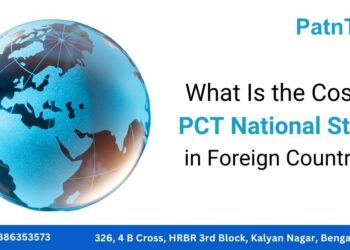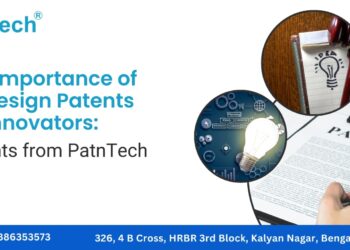Who can apply for a Patent in India?
- October 31, 2020
- Posted by: Patntech
- Categories: Blog, Patents


An inventor has the right to apply for a patent for an invention. However, the right to apply for a patent can be transferred to another person legally by way of assignment.
In India, a person to be eligible to file an application for a patent should either be:
(a) Any person claiming to be the true and first inventor of the invention; or
(b) Any person being the assignee of the person claiming to be the true and first inventor in respect of the right to make such an application; or
(c) The legal representative of any deceased person who immediately before his death was entitled to make such an application.
A) Who is an inventor?
Inventor is a person who has contributed to conception of a subject matter as described in at least one claim in the patent application. Inventorship is based solely on the claims in a patent application, not the entire specification. Therefore, a person who helped to conceive features described in at least one of the claims in the patent application becomes an inventor. In other words, when there are more than two inventors, it is not necessary that each of the inventors make an equal contribution for the claims made in a patent application and contribute to every claim.
B) Who is an assignee?
An assignment is the legal act of transferring the ownership of patents to another. Patents have the attributes similar to personal property and can be transferred or assigned to another individual or entity i.e., company. An inventor can file the patent applicant and assign the rights to another individual or company, who then becomes the assignee of the patents. The assignee has to manage the patent application as if it is his/their own patent.
For inventors who are employed by an employer, they have to automatically assign the rights to the employer. Employment agreement generally includes a clause whereby an employee agrees to disclose and assign the intellectual property rights to the employer during the period of his/her employment.
C) Who is an applicant?
The applicant is the individual applying for the patent and is responsible for the patent. An applicant can be any individual or a corporation to whom the invention is assigned by the inventor. If there is no assignee then the inventor himself becomes the applicant. In case of more than one inventor, then all inventors will be joint applicants.
Type of Applicants:
Indian Patent Office (IPO) has defined four type of applicants i.e., natural person, startup, small entity and large entity. The type of applicant allows the applicant to file a patent application and maintain an issued patent for a reduced fee Below are the different type of applicants.
- Natural Person(s):
Natural person includes one or many individuals. The patent office provides 80% reduction in official filing fee for natural person(s).
- Startup:
Startup is an entity recognized by Department of Industrial Policy & Promotion (DIPP) is defined as:
a) The Startup should be incorporated as a private limited company or registered as a partnership firm or a limited liability partnership.
b) Turnover should be less than INR 100 Crores in any of the previous financial years.
c) An entity shall be considered as a startup up to 10 years from the date of its incorporation
d) The Startup should be working towards innovation/ improvement of existing products, services and processes and should have the potential to generate employment/ create wealth. An entity formed by splitting up or reconstruction of an existing business shall not be considered a “Startup”.
The benefits for the startup includes 80% reduction in patent filing fee, fast tracking of patent applications and panel of patent agents to help in patent applications. It is mandatory for an entity claiming to be a startup to submit a certificate issued by the DIPP to avail the benefits.
- Small Entity:
Small entity is an enterprise classified under the Micro, small and medium enterprise development Act, 2006.
Patent office provides a 50% reduction in official filing fees for small entities.
- Large Entity:
An entity that does not fall under any of the above categories is considered as a large entity. Large entities have to pay the official fee in full.
Author: Chandrasekhar Raju
AIPPI World Congress, Yokohama, Japan
We are pleased to share that PatnTech’s Managing Partner, Mr. Chandrasekhar Raju, attended the AIPPI World Congress held in Yokohama, Japan, from September 13–16, 2025.
October 1, 2025What Is the Cost of PCT National Stage in Foreign Countries?
The Patent Cooperation Treaty (PCT) simplifies patent protection for companies and inventors worldwide
August 6, 2025The Importance of US Design Patents for Innovators: Insights from PatnTech
In today’s competitive marketplace, innovation drives success, and protecting those innovations is crucial.
July 21, 2025How to Apply for a US Design Patent: Your Step-by-Step Guide
A US design patent protects the unique ornamental design of an article of manufacture. It helps businesses and inventors safeguard their innovative creations.
July 10, 2025




